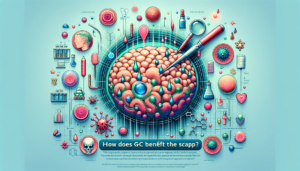Hair care has evolved tremendously over the years, with various treatments promising rejuvenation and vitality. Among these, Growth Factor Concentrate (GFC) therapy stands out for its advanced approach to scalp and follicle health. So, this article delves into common queries surrounding GFC hair treatment, offering insights for those considering this innovative option. It’s a modern solution in an era where individuals seek both efficacy and safety in hair care treatments.
What Exactly is GFC Treatment?
It is a cutting-edge procedure focusing on the scalp’s health. It employs growth factors, naturally occurring proteins that aid in cell growth and repair. This treatment harnesses these proteins to stimulate follicles, potentially leading to improved hair growth and strength. Unlike traditional methods, GFC is based on regenerative medicine principles, making it a go-to choice for many seeking a scientifically-backed solution. Its foundation in science and innovation sets it apart from other treatments, offering a glimmer of hope for those who have tried various methods with limited success.

How Does GFC Therapy Benefit the Scalp?
The primary advantage of GFC treatment lies in its ability to rejuvenate the scalp at a cellular level. Growth factors are crucial in cell regeneration, which can translate into healthier, more robust strands. This method targets the root cause of thinning and weakness, offering a comprehensive approach rather than a superficial fix. As such, patients often report a noticeable difference in the texture and volume of their hair, attributing these changes to the treatment’s deep-reaching impact.
Is the Procedure Invasive or Painful?
One of its most appealing aspects is its non-invasive nature. The procedure involves applying a serum rich in growth factors to the scalp. This application is typically pain-free, with most clients experiencing minimal discomfort. The non-invasive approach also means there’s little to no downtime, allowing clients to resume their daily activities immediately after the session. This convenience makes it an ideal choice for busy individuals who cannot afford extensive recovery time.
Who is an Ideal Candidate for GFC Therapy?
GFC treatment is suitable for many individuals experiencing scalp and growth concerns. It’s particularly beneficial for those noticing early signs of hair thinning or who wish to improve the overall health and appearance of their strands. However, consulting with a professional is crucial to determine if this treatment aligns with specific needs and conditions. A thorough assessment can help ensure that GFC therapy is the right choice. Those with certain medical conditions or scalp issues might find this treatment particularly beneficial, as it’s designed to cater to a variety of needs.

What Results Can One Expect and How Long Do They Last?
Outcomes from GFC treatment can be quite promising. Many report a significant improvement in their hair’s texture, volume, and overall appearance within weeks of their first session. However, results vary depending on individual factors such as age, lifestyle, and the initial condition of the scalp. Typically, the benefits are not permanent, necessitating periodic sessions to maintain the results. A specialist can provide a tailored plan to ensure optimal and lasting effects. As such, this therapy is often fulfilling, with many clients reporting cosmetic improvements and an enhanced sense of well-being.
Conclusion
GFC hair treatment offers a novel and effective approach to scalp and follicle care. By leveraging the power of growth factors, this therapy addresses issues at its root, fostering an environment conducive to health and growth. Its non-invasive nature and suitability for a wide audience make it an attractive option for those seeking a scientific yet gentle solution to their scalp concerns. The journey towards better hair health is often fraught with challenges, but GFC therapy presents a promising path forward.


